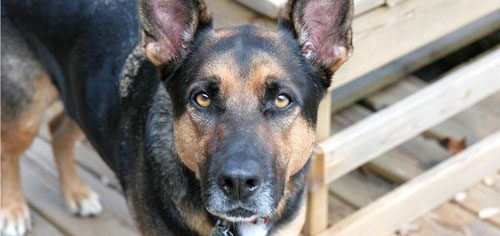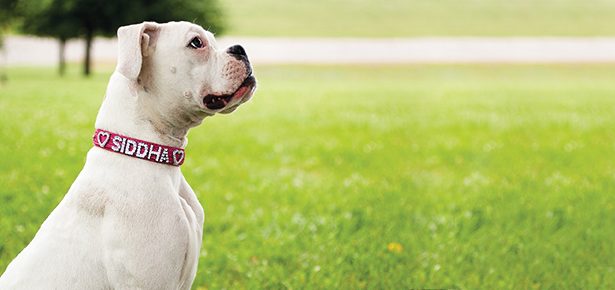

Are You Making These 10 Training Mistakes?
Ten common mistakes and how to avoid them
After thousands of years of practice, you might think that training a dog would be a natural, almost intuitive, process for us humans. But, too often, we make honest errors in training that result in nagging misbehaviours and strained relations. Owing to the dog’s resilient nature, minor mistakes rarely result in catastrophe. But major errors can cost owners (and dogs) years of frustration. I’ve therefore listed the ten biggest training mistakes I see owners make, and offer alternatives to improve your chances of keeping you and Fido on the straight and narrow. Note that these are related to training technique only, and not to other important areas such as socialization, enrichment, or exercise.
1. You don’t train your dog often enough
Most of us do teach basic behaviours and routines to our new dogs. But once the relationship stabilizes, we often allow our dogs to go on “auto-pilot.” Consequently, response times for important behaviours can worsen; often a dog won’t even respond. This degradation is simply a function of a lack of practice; if you play golf only once a year, you’re going to stink at it, right?
Instead of “training then forgetting,” keep your dog’s established behaviours sharp by working them randomly and regularly, several times each day. “Sit” for dinner, “wait” at doors, “down” at the dog park; be spontaneous and unpredictable. Then, each month, teach a new behaviour—a trick will do—to keep your dog’s mind and motivation up. The larger your pet’s repertoire of behaviours, the smarter he or she gets, and the more important you become.
2.You repeat commands
I see this often, especially among newbie owners with challenging dogs. The owner has taught a behaviour such as “sit,” but, due to distractions, bad technique, or confusion on the dog’s part, the pet fails to respond. The owner asks repeatedly until, after the sixth or seventh attempt, the dog halfheartedly sits. This stalling becomes a learned behaviour, one that’s hard to break.
This often occurs with behaviours that haven’t been fully proofed, or with one the dog doesn’t particularly like to perform. Headstrong dogs, for instance, hate to lie down, as it is an admission of deference. Timid dogs also resist lying down, a position they might deem too unsafe.
When I teach “sit,” I do so as if it’s a fun trick; I treat reward at first, praise, then work it in other locations, reducing treat rewards along the way while increasing praise. I make sitting, lying down, or coming when called the greatest things to do.
Once you are sure a dog knows a behaviour, ask only once! If you are ignored, it’s either because you haven’t taught it properly, or the dog is distracted or simply rebellious (yes, they can be!). Take Fido to a quiet spot and ask again; if he still doesn’t respond, go back to basics and re-teach, avoiding the mistake of asking multiple times, or of making the behaviour seem dreary or unbeneficial. If you suspect your dog is simply blowing you off, don’t be afraid to show your disappointment by saying in a convincing tone: “No; sit.”
One other tip; after asking once without response, wait a moment, while looking your dog square in the eye and moving in a bit closer. Often this will be enough to get the dog to comply. Then praise!
3. Your training sessions run too long or too short
Teaching new behaviours to a dog is a process of evolution, not revolution. The key is in knowing that it’s usually going to take numerous sessions to perfect a new behaviour.
Time spent on a training session should reflect some positive result; as soon as you attain some obvious level of success, reward, then quit. Don’t carry on and on, as you’ll likely bore the dog, and actually condition it to become disinterested in the new behaviour. Likewise, don’t end a session until some evidence of success is shown, even if it’s a moment of focus or an attempt by the dog to try to perform. Remember that ten one-minute sessions in a day trump one ten-minute session every time.
4. Your dog’s obedience behaviours are not generalized to varying conditions
If you teach Fluffy to “sit” in the quiet of your family room, that’s the only place she will reliably sit. It’s a mistake that many owners make; failing to generalize the new behaviour in different areas with varying conditions and levels of distraction will ensure spotty obedience at best.
To generalize a behaviour, first teach it at home with no distractions. Then, gradually increase distractions: turn the television on or have another person sit nearby. Once that’s perfected, move out into the yard. Then add another person or dog. Gradually move on to busier environments until Fluffy will perform consistently, even on the corner of a busy city street. Only then will the behaviour be “proofed.” This generalizing is especially vital when teaching the recall command, a behaviour that might one day save your dog’s life. [For more information on reliable recall, go to moderndogmagazine.com/distract-me.]
5. You rely too much on treats and not enough on praise, esteem, and celebrity
Treats are a great way to initiate a behaviour or to reinforce that behaviour intermittently later on. But liberal use of treats can often work against you. There can develop in the dog’s mind such a fixation on food that the desired behaviour itself becomes compromised and focus on the owner diffused. Think of it: you’ll rarely see hunting, agility, Frisbee, or law enforcement dogs being offered food rewards during training or job performance. Why? Because it would break focus and interfere with actual performance. Instead, other muses are found, including praise and, perhaps, brief play with a favourite toy. Most of all, reward for these dogs comes from the joy of the job itself.
By all means, initiate new behaviours with treats. But once Fido learns the behaviour, replace treats with praise, play, toy interludes, or whatever else he likes. Remember that unpredictable treat rewards work to sharpen a behaviour, while frequent, expected rewards slow performance and focus. Also, understand that you are a reward as well; you responding happily to something your dog has done will work better than a treat, and have the added effect of upping your “celebrity quotient.”
6. You use too much emotion
Excessive emotion can put the brakes on Fluffy’s ability to learn. Train with force, anger, or irritation and you’ll intimidate her and turn training sessions into inquisitions. Likewise, train with hyperbolic energy, piercing squeals of delight, and over-the-top displays of forced elation, and you will stoke her energy levels far beyond what is needed to focus and learn.
I tell students to adopt a sense of “calm indifference”—a demeanor suggesting competence, and a sense of easy authority. A laid-back, loving, mentoring kind of energy that calms a dog, and fills it with confidence. If your dog goofs up, instead of flying off the handle, back off, and try again. Likewise, if she gets something right, instead of erupting with shrill pomp, just calmly praise her, smile, then move on. She will gradually imprint on this relaxed attitude and reflect it.
7. You are reactive, not proactive
Dog training is a lot like the beautiful martial art of Tai Chi, with equal parts physical and philosophical. It takes timing, technique, and stamina, as well as a devotion to understanding the canine mind. It is not a skill that can be learned by watching one half-hour television show or from reading a few books. It takes time.
As a result, many dog owners have not yet mastered the timing and insight needed to train as capably as they might like. Like someone playing chess for the first time, they react to their opponent’s moves instead of planning their own.
When you simply react to Fido’s misbehaviours, you lose the opportunity to teach. Instead, practice your technique; anticipate his reactions ahead of time, becoming more proactive in the process. For example, if trying to quell a barking issue, instead of waiting for the barks to start, catch Fido right before his brain says “bark,” and distract it into some other, more acceptable, behaviour. Know that whatever stimulus is causing the barking needs to be either eliminated or redefined as a “good thing” in the dog’s head. This takes experience and a proactive role on your part.
8. You are inconsistent
Dogs need to feel that their mentors and providers are consistent in behaviour and in rule setting. If you vary training technique too much, especially in the beginning, you’ll diminish your dog’s ability to learn. For instance, if one day you stay patient with a stubborn dog, but the next day lose your cool, she won’t be able to predict how you’ll react at any given moment. This breaks confidence and trust. Instead, stick to a consistent methodology and be unswerving regarding what is suitable behaviour. For instance, if Fluffy isn’t allowed on the bed, but you let it happen two times out of ten, that’s inconsistent. Set rules and stick to them.
9. You lack confidence
Loss of confidence is a weakness, and I think that, as natural predators, dogs can sense it instinctively. It’s why frightened people get bitten more often than calmer individuals.
Show a lack of confidence and Fido will exploit it. That’s not a condemnation of your pet; it’s just a dog’s nature. To avoid this, simply work him more and attain some training successes. Attending a class with him can work wonders to increase your confidence, as can you spending time with other dogs. Try trading dogs with a friend every so often for the different experience. Take your dog into different venues, and push yourself and your dog to learn more. Practice!
10. You don’t train to the individual dog
Every dog has a distinct personality and behavioural profile. Though breed helps determine this, the individual dog’s character must be understood before training can succeed. As a trainer, you must determine what methods will work best with your dog.
For example, most retrievers are very sociable and can handle lots of people or dogs around them. But try this with a Chow Chow or Shiba Inu, and you may be in for a surprise. Likewise, a dog with a high food drive will respond to treats, while a dog with a low food drive may require a different muse. A shy dog will fare poorly with a robust training technique, whereas a swashbuckling dog might not even hear the gentle appeals coming from a trainer with a less hardy style. Think timid Toy Poodle versus rowdy Rottweiler.
If you have a shy dog, plan on showing a saint’s patience. Train peacefully, with little distractions at first. Train to the dog’s limitations, but plan to gradually sneak in social situations to desensitize and build confidence. If your dog is a big, bulldozing lummox, be just as big, just as hearty. Know that this dog can be challenged more than that timid dog. And know that, because of its size and strength, you simply must achieve control over it, especially in social situations. For dogs in between, reason out a training strategy based upon personality, size, age, energy, breed, and history.
If you stick to these basic guidelines, you’ll slowly redefine yourself as the resident trainer, and not just your dog’s concierge. Practice, succeed, be confident, and have fun with your protégé!
Join the newsletter and never miss out on dog content again!
"*" indicates required fields
By clicking the arrow, you agree to our web Terms of Use and Privacy & Cookie Policy. Easy unsubscribe links are provided in every email.





